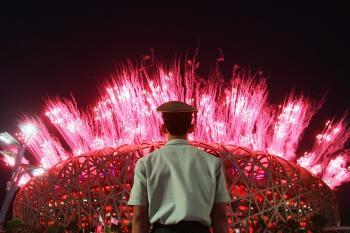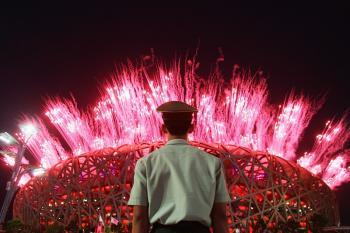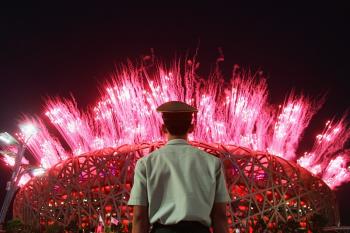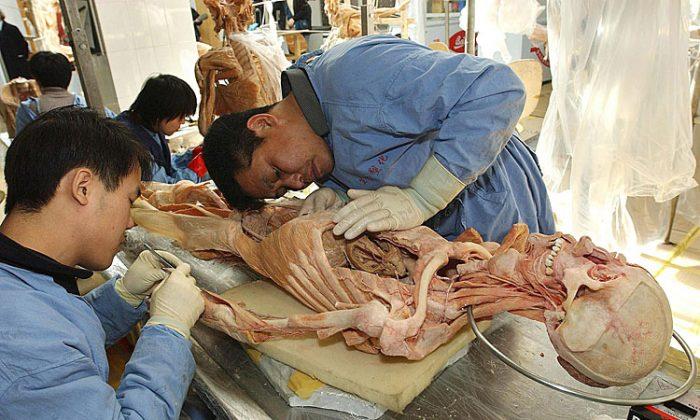China’s National Stadium slammed for safety issues
Giant, steel-cold and unbelievably complicated, China’s National Stadium, nicknamed the Bird’s Nest, is a perfect embodiment of the country under communist reign. Also like China, the world’s most expensive arena, costing at least 3.5 billion yuan (US$ 501 million), has drawn sharp criticisms from the day it broke ground.
On December 24, 2003, the bird’s nest began construction. Eight months later, on July 30, 2004, China called a halt to the construction, which was resumed five months later in December with a streamlined design. Though China told foreign media the redesign aimed at avoiding unnecessary extravagance, what appeared in some Chinese media revealed another story.
It turned out the original design had potential safety hazards.
Flawed design halted construction
On June 5, 2004, some of China best architects gathered for an academicians’ conference. When the Bird’s Nest construction was brought up, experts found themselves sharing concerns with its safety issues. Later four top architects, all academicians and professors in China’s best architectural institutes, initiated a petition letter, co-signed by 10 academicians, to Chinese premier Wen Jiabao addressing the safety issue of the Birds Nest.
In the limited parts published, the petition criticized the design’s reckless pursuit for visual impact while undermining the stadium’s safety standards. “(The Birds Nest) is expensive and clumsy, totally running counter to prevailing principles for large sports facility construction,” the petition said. “It means enormous waste and risk.”
In an interview with local newspaper The Beijing News in August, 2004, Tang Jianhua, the vice deputy chief engineer of Beijing Survey and Design Institute, explained that the Bird’s Nest was too heavy to be safe. He said each of the 24 piers supporting the gigantic steel structure exerts an average pressure of 40,000 - 50,000 metric tons per square meter to the foundation. Beijing’s ground has never been tried with such weight, he said. Also, the Bird’s Nest sits on a ground rich in underground water with fluctuating depth. Given Beijing’s inadequate float-resisting measures, Tang doubted the foundation could survive the pressure once leakage occurs.
In addition, Tang said, the bowl-shaped stands are supported by radial pillars, some of which tilt at considerable angles. Tang said he feared the pillars may collapse due to the heavy pressure from the roof.
Streamlined, but not free from danger
Even though Beijing decided to streamline the design, losing the roof and reducing steel by almost 10,000 tons, the situation is still not optimistic.
Korean architect Lee Jung-Jin also said the structure and construction materials of the Bird’s Nest leave it vulnerable to gravity, temperature change and noise. Such extensive use of steel never occurred in constructing large buildings like this, he said, because of the weight. The Bird’s Nest’s steel skeleton consists mainly of slanting lines, which provide less support than vertical pillars, Lee said. As the top of the stadium is also heavy steel with no supporting pillars—any crack may cause massive collapse,
In addition, the steel plates were welded together with a total seam of 300,000 meters, 60,000 done on the construction site. The internal stress caused by the heat of welding will lead to deformation unless enough time is allowed for the metal to recover from the heat. Lee said a construction like the Bird’s Nest needs 10 years or longer for the metal to recover from welding heat, and the short duration of the Bird’s Nest construction means higher risk of deformation.
Metallic expansion caused by temperature may do harm in another way. Lee explained that during summer time the stadium’s internal and external temperatures are different due to the use of air conditioning, which may also cause deformation or even collapse.
Lee said another concern is the resonance caused by loud cheers. As widely known, resonance can cause serious damage to constructions. As the steel structure of the Bird’s Nest was not joined and reinforced from underground, plus Beijing’s soft soil, Lee said vibration from resonance is a serious threat to its foundation.
$500 million spent at whim
People wonder how China could allow a flawed design to win the competition and break ground for its most expensive building which is closely watched by the entire world. But Li Tuofen, the architect who led the optimization of the stadium, was not surprised.
According to Li, general architect at China Northwest Civil& Building Engineering Design & Research Institute, the Bird’s Nest design was not approved by any authoritative organizations before it won the competition. Li said the feasibility check for many other Olympic facilities were also conducted after the designs were selected as final.





Friends Read Free